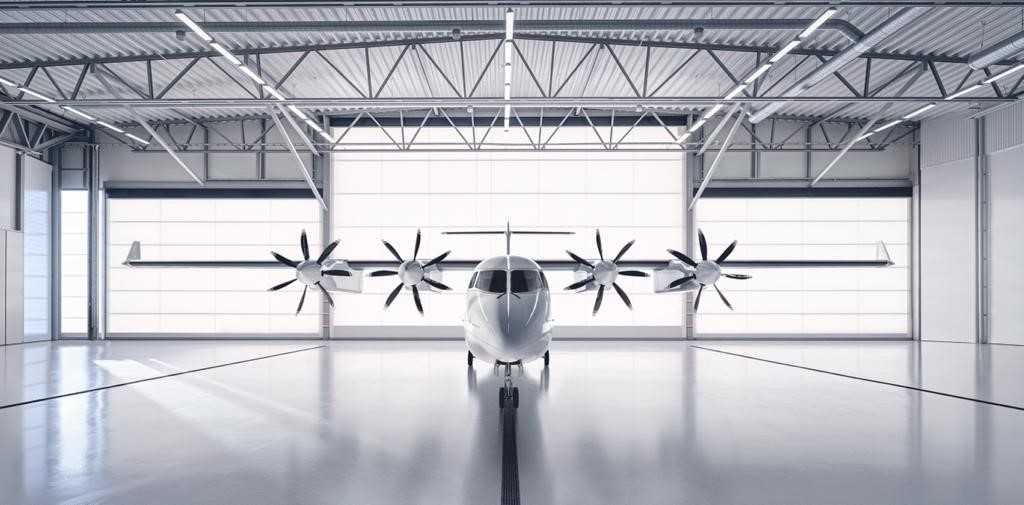
ANNnews – Juan Carlos Ortiz (Director of Business Development in USA) – Innovation
1 December 2021
Heart Aerospace has selected Arennova to co-design the structure for the new ES-19 electric airplane. Aernnova will work together with Heart’s engineers in the design of the wing, the fuselage and the empennage of the airplane.
Based in Göteborg, Sweden, Heart Aerospace is developing a 19 seats fully electric, zero-carbon emissions regional airliner, driven entirely by batteries and electric motors. This first-generation aircraft will have a maximum range of up to 250 miles, using lithium-ion batteries. Range will increase as battery energy densities improve.
United – one of the world’s largest airlines and Mesa, the largest operator of 19-seater aircraft in history have together placed purchase orders for 200 ES-19.
The ES-19 aircraft will have 19 seats, arranged in 8 rows of 1+1 arrangement, plus three seats at the rear. Seat pitch will be 30”. The ES-19 is designed to be an electric STOL (Short Take-Off and Landing) aircraft and operate from runways of 750m and will have steep approach capability.
The new ES-19 market will be short flights, where there is high demand. This will include island-hopping and flying over mountainous areas, where the flight distance is significantly less than the road routes available. Examples of routes include Chicago O’Hare International Airport (ORD) to Purdue University Airport (LAF), which is 191 km, and San Francisco International Airport (SFO) to Modesto City-County Airport (MOD), which is 120 km., but also from countries like Indonesia, a country of 17,000 islands that has undergone a four-fold increase in domestic air travel in the last decade.
Electric aircraft won´t be ready for long-haul routes soon, and therefore, it is only part of the solution for decarbonizing air travel. In this case of long-haul routes, work is being done on using hydrogen and biofuels.
A few decades ago, 19-seater aircraft were very common. Since then, the large acquisition and maintenance cost of turboprop jet engines have made 19-seaters are not profitable. The electric motor is about 20 times less expensive than a similarly-size turboprop, and about a 100 times less expensive than the cheapest turbofan. More importantly, maintenance costs are more than 100 times lower. These lower operating costs will make 19-seater electric aircraft competitive to 70-seater turboprop aircraft.
The design of the ES-19 is based on an aluminum airframe with retractable landing gear, a high wing, a T-shaped empennage and a non-cylindrical fuselage to optimize the cabin interior. The core of the ES-19 is the electric propulsion system.
The ES-19 will be much quieter than any fossil-fuel aircraft, and the engine vibrations that can be felt on smaller aircraft are virtually eliminated. The aircraft is fully fly-by-wire, and actively compensates for turbulence, ensuring a smoother ride in all weather conditions. The all-metal fuselage is fully pressurized.
The ES-19 will have zero operational emissions. Electric aircraft will play an important role in decarbonizing short-haul air travel.
Electric aircraft work best in places with easy access to renewable energy, just like electric cars. In Sweden and Norway, over 90% of grid energy comes from renewable sources.
The current and emerging generation of high power chargers developed for automotive applications support the voltage and power levels required for electric aircraft charging. The most notable difference for aircraft applications will be the physical connector type and perhaps the data communication between the charger and aircraft. Charge time is largely dependent on the available charging infrastructure but with the recommended charging, it can charge an ES-19 in less than 40 minutes.
Perhaps the biggest difference between automotive and aerospace electric propulsion system development is the certification and qualification requirements for both hardware and software. The current industry standard and accepted means of compliance for certifying liquid electrolyte lithium-ion batteries is laid out in RTCA DO-311A. The test involves forcing 2 adjacent cells into thermal runaway, and showing it does not lead to a chain reaction thermal runaway, no release of fragments outside the battery system and no escape of gases outside the battery system except through designated venting.
The ES-19 will be certified to existing CS-23 certification standards, the same as used by all conventional aircraft. As a 19-seat passenger aircraft, we will certify to the highest level of CS-23, Level 4, with requirements as stringent as most commercial aircraft.
The major milestones towards certification are to complete a Preliminary Design Review (PDR) in Q3 2022, a Critical Design Review (CDR) in Q3 2023, a first flight in Q4 2024, and a Type Certificate in Q3 2026. Entry into service would follow in Q4 2026.
Aernnova is fully committed to contributing to a net-zero carbon emissions goal by 2050 and to play a leading role towards a net zero aviation industry. Technological Development and Innovation is one of Aernnova’s strategic growth vectors to meet this ambitious goal motivated by the need to reduce energy use, emissions, and noise, by adding value to products and services for our clients and ensure a lasting positive impact on our society, economy, and environment.
The ES-19 project forms part of Aernnova’s plan to promote new technologies with an impact on sustainable development and this agreement with Heart Aerospace marks a new growth segment for Aernnova into the market for electric and hybrid-electric propulsion aircrafts.



